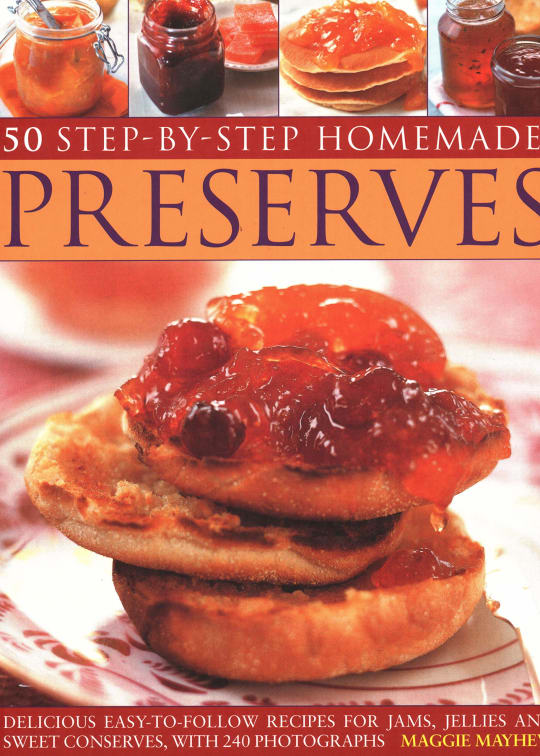Jams and Jelly: A Sweet Spread Guide
At a glance..
This comprehensive resource will teach you the differences between jams and jelly. Highlighted with a variety of common jams and jelly recipes, you will learn the basics of mastering this sweet spread - perfect for emergency storage and gift giving.
The details..
Preserving Food: Jams and Jellies provides an easy-to-follow guide on how to make various types of sweet spreads such as butters, conserves, marmalades, preserves among others. These add zest to meals while also providing a way to preserve fruits that are not completely suitable for other preservation methods like canning or freezing. The book explains the four essential ingredients required - fruit (including irregular/ imperfect ones), pectin (the actual gelling substance), acid (needed for gel formation)and sugar( helps form the gel). It highlights high-pectin fruits which include apples, crab apples etc., low-pectin fruits like strawberries, blueberries etc., commercial pectins available in liquid/powdered forms including two new types that allow jellied products with no added sugar; one with 1/3-less sugar.
The book goes into detail about what equipment is necessary when making these sweet spreads including large flat-bottom pots,jelly bags/cloth stands,colanders,candy/deep fat thermometer,jars/lids/bands,racks,and deep cooking pots.The author stresses on sterilizing jars before use by washing them thoroughly then boiling them for at least ten minutes.It's important to note that lids should only be used once.
Sealing jellies/jams correctly determines whether they are safe to eat/how long they will keep.A product must be processed in boiling water bath after being poured into hot sterilized jars leaving enough headspace.Wipe jar rims/close treated canning lids/screw bands.Place on rack inside canner filled with boiling water.Cover it up.Bring back boil/gently boil for five minutes.Remove jars onto protected surface away from drafts.Processing time varies depending on altitude.Storage requires cooling down without moving jelly products especially within twelve hours.Check seal/remove screw band,label/store in cool,dry/dark place.Shorter storage times result better quality though cooked jellied products should last at least a year.
Making Jelly involves sorting out overripe/undesirable fruit,washing it properly without removing cores/skins since pectin concentration is higher there.Prepare fruit juice extraction according recipe directions.Juicy berries need crushing/heating until soft.Firm fruits require cutting up/heating small amount of water.Put prepared fruit damp jelly bag/several thicknesses cheesecloth.Hang drip into large bowl/kettle.Clearer jelly comes from juice dripping through bag without pressing/twisting tightly.
